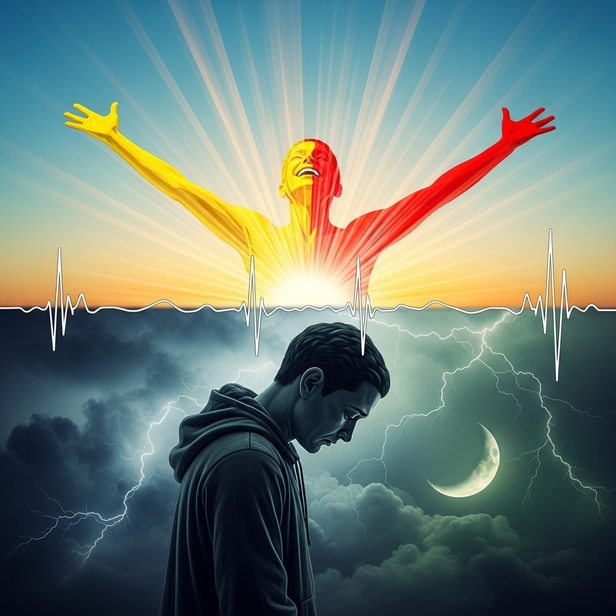Why Depression Isn’t One Thing: And How It Touches Us All
Noopur Kumari | Sep 05, 2025, 07:07 IST
Depression
( Image credit : Pexels )
Depression is not just “feeling sad.” It comes in many hidden forms sometimes lasting for years, sometimes appearing only in certain seasons, sometimes rooted in childhood, and sometimes linked to other health conditions. This article explores the many faces of depression, its signs, and its spiritual and emotional impact on human life. By understanding it better, we create a world where pain is not dismissed, but held with compassion and healing.
Have you ever seen someone laughing with friends but secretly breaking down when alone? Depression wears many masks. It’s not always visible, yet it silently affects millions across the world. While science explains depression through symptoms and disorders, ancient wisdom reminds us that it is also the cry of the soul for balance, connection, and light. Let’s uncover the different kinds of depression, so we can recognize the silent battles within ourselves or our loved ones and move towards healing.

Also called clinical depression, this type involves a deep sense of sadness lasting at least two weeks. People lose interest in activities they once loved, struggle with energy, and may feel life has lost meaning. It’s not laziness or “mood swings.” It’s a serious condition that affects sleep, appetite, and concentration. Yet, with treatment and compassion, recovery is possible.

Unlike MDD, dysthymia is less severe but more chronic; it can last for two years or more. Imagine carrying a gray cloud overhead every day, where happiness feels dull and distant. People with dysthymia often function in daily life but feel a constant undertone of sadness. Support and therapy can bring back the colors of life.
Some people experience depression that changes with the seasons, known as Seasonal Affective Disorder (SAD). It often begins in late autumn or winter, when shorter days and less sunlight affect mood and energy. Symptoms may include persistent fatigue, oversleeping, weight gain, and feelings of sadness or hopelessness. Daily tasks feel heavier, and motivation drops with the cold and darkness. Yet, as spring and longer days return, many notice a natural lift in mood. With timely awareness, light therapy, healthy routines, and mindful self-care, this seasonal cycle can be managed, bringing balance and hope even in the darkest months.

Children, too, can suffer from depression, though it often shows up differently than in adults. One such condition is Disruptive Mood Dysregulation Disorder (DMDD), where children experience intense anger outbursts, frequent mood swings, and constant irritability. What may appear as “bad behavior” is often a reflection of hidden pain or deep emotional imbalance. If ignored, it can affect their confidence, learning, and future relationships. But with early understanding, patience, and nurturing care, children can learn healthier ways to express their emotions. Recognizing the signs early isn’t just treatment it’s giving them the chance to grow into emotionally balanced adults.

In bipolar disorder, depression is part of a bigger cycle. People experience deep lows followed by extreme highs (mania or hypomania). This shifting between darkness and brightness can be exhausting. Recognizing both phases is important for proper treatment and balance.
In spiritual traditions, depression is seen as a disconnection from self, from love, or from purpose. Just as the body signals pain through wounds, the soul signals imbalance through sadness. Meditation, prayer, or simply sitting in silence can reconnect us to our inner light. Healing begins when we stop judging depression as weakness and start seeing it as a call for compassion.Depression is not something to “just get over.” If you or someone you know feels persistently sad, hopeless, or is having thoughts of self-harm, please seek help immediately.
Explore the latest trends and tips in Health & Fitness, Spiritual, Travel, Life Hacks, Trending, Fashion & Beauty, and Relationships at Times Life!
1. Major Depressive Disorder: When Joy Feels Out of Reach

person sitting alone with head down
( Image credit : Times Life Bureau )
Also called clinical depression, this type involves a deep sense of sadness lasting at least two weeks. People lose interest in activities they once loved, struggle with energy, and may feel life has lost meaning. It’s not laziness or “mood swings.” It’s a serious condition that affects sleep, appetite, and concentration. Yet, with treatment and compassion, recovery is possible.
2. Persistent Depressive Disorder: The Lingering Cloud

cloudy sky representing low mood
( Image credit : Pexels )
Unlike MDD, dysthymia is less severe but more chronic; it can last for two years or more. Imagine carrying a gray cloud overhead every day, where happiness feels dull and distant. People with dysthymia often function in daily life but feel a constant undertone of sadness. Support and therapy can bring back the colors of life.
3. Seasonal Affective Disorder: When Seasons Change the Soul
Some people experience depression that changes with the seasons, known as Seasonal Affective Disorder (SAD). It often begins in late autumn or winter, when shorter days and less sunlight affect mood and energy. Symptoms may include persistent fatigue, oversleeping, weight gain, and feelings of sadness or hopelessness. Daily tasks feel heavier, and motivation drops with the cold and darkness. Yet, as spring and longer days return, many notice a natural lift in mood. With timely awareness, light therapy, healthy routines, and mindful self-care, this seasonal cycle can be managed, bringing balance and hope even in the darkest months.
4. Disruptive Mood Dysregulation Disorder

symbolic image of light and dark halves
( Image credit : Times Life Bureau )
Children, too, can suffer from depression, though it often shows up differently than in adults. One such condition is Disruptive Mood Dysregulation Disorder (DMDD), where children experience intense anger outbursts, frequent mood swings, and constant irritability. What may appear as “bad behavior” is often a reflection of hidden pain or deep emotional imbalance. If ignored, it can affect their confidence, learning, and future relationships. But with early understanding, patience, and nurturing care, children can learn healthier ways to express their emotions. Recognizing the signs early isn’t just treatment it’s giving them the chance to grow into emotionally balanced adults.
5. Bipolar Disorder: Between Darkness and Over-Brightness

darkness and brightness
( Image credit : Times Life Bureau )
In bipolar disorder, depression is part of a bigger cycle. People experience deep lows followed by extreme highs (mania or hypomania). This shifting between darkness and brightness can be exhausting. Recognizing both phases is important for proper treatment and balance.
Spiritual Perspective: Depression as the Soul’s Cry
Explore the latest trends and tips in Health & Fitness, Spiritual, Travel, Life Hacks, Trending, Fashion & Beauty, and Relationships at Times Life!
